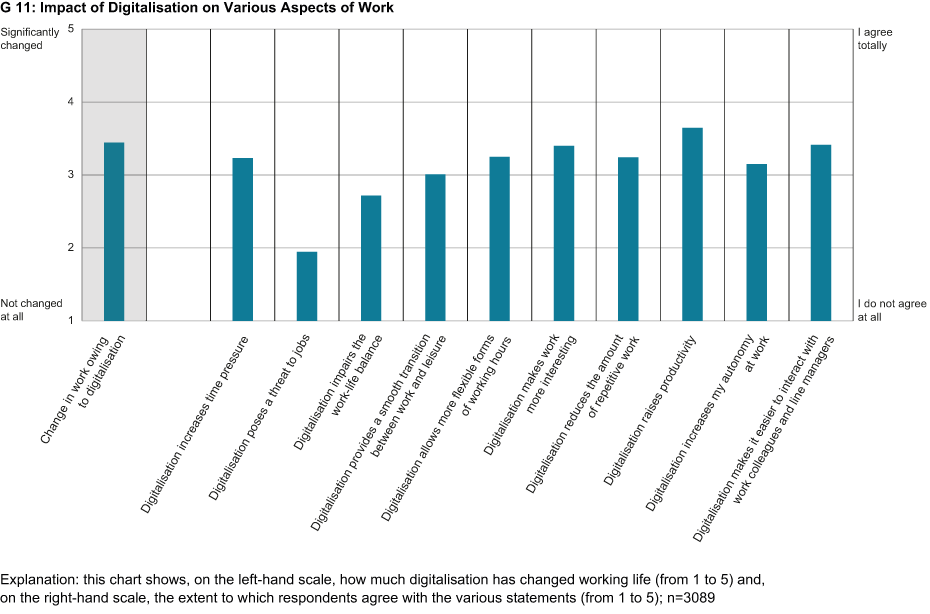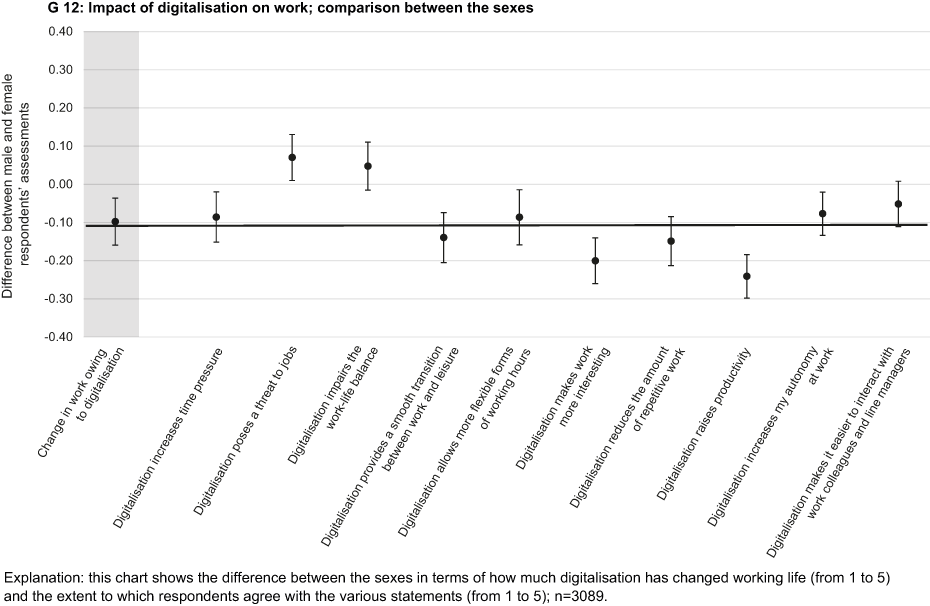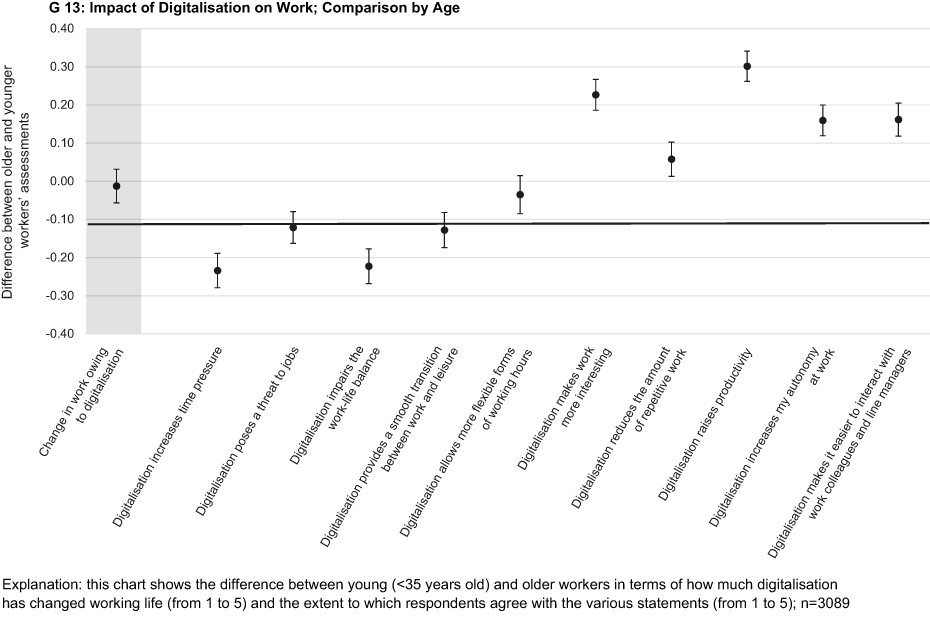How does digitalisation affect everyday working life?
- KOF Bulletin
- Education
Greater labour productivity, more interesting work, easier interaction with colleagues and line managers, more time pressure: KOF researchers asked graduates of higher technical colleges about the extent to which digitalisation is changing their work. The results show that the impact is significant. However, it differs according to gender and age.
Digitalisation is understood to be the change to digital processes and products resulting from information and communication technologies. This change can create new jobs as well as replace existing jobs. However, digitalisation can also change everyday working life and thus influence job satisfaction. For example, it can reduce the proportion of repetitive tasks and enable more flexible forms of working, such as working from home. Digitalisation can also increase time pressure at work and blur the distinction between work and leisure.
As there is still fairly little evidence available in this field, this article examines the impact of digitalisation on everyday working life based on a survey of more than 3,000 HF (higher technical college) graduates carried out in autumn 2019.
Higher productivity, more interesting work
The first column in Chart 11 shows the extent to which digitalisation has affected the work of respondents over the past year (on a scale of one to five). It can be seen that this impact has been significant. The average of 3.5 can be considered high, especially because the question refers to the past year.
Respondents also indicated the extent to which they agreed with statements on different aspects of this impact (right-hand scale of Chart 11). In particular, they indicated that digitalisation increases labour productivity, makes work more interesting, simplifies interaction with colleagues and line managers and allows more flexible forms of working (e.g. working from home).
However, digitalisation also increases time pressure at work. On the other hand, respondents feel that there is little impact on their work-life balance and expect their jobs to be hardly threatened at all by digitalisation. This assessment could vary depending on the population group. The findings presented are therefore not necessarily representative of the Swiss population as a whole and refer solely to HF graduates and students.
Women less affected by digitalisation than men
Chart 12 shows the differences in responses between the sexes. The coefficient in the first column shows that female respondents consider the impact of digitalisation on work to be less strong than male respondents.
Looking at the right-hand axis, the responses from female respondents are less clear for both the positive and negative aspects. In their opinion, digitalisation increases time pressure less, but they also benefit less from the increase in autonomy and the reduction in repetitive tasks. In addition, digitalisation has less of an impact on how interesting work is for women and how productive they are. Furthermore, in their perception the distinction between work and leisure time is less blurred, but they also benefit less from more flexible forms of working. These positive effects of digitalisation are therefore less evident for them. There is no statistically significant difference between the sexes when it comes to any deterioration in the work-life balance and easier interaction with colleagues and line managers.
Younger workers tend to benefit from positive effects
Chart 13 shows the differences between young (<35 years old) and older workers (>= 35 years old). The first column shows that the impact of digitalisation on work is judged to be equally strong overall. Looking at the differences in terms of individual criteria, it becomes clearer that the effects differ according to age group.
For example, digitalisation increases the time pressure on younger workers less than on older ones. Moreover, young people are less likely to report that their jobs are at risk as a result of digitalisation or that their work-life balance is deteriorating. Furthermore, digitalisation blurs the distinction between work and leisure time less in relative terms for younger people. In contrast, the remaining beneficial effects of digitalisation are more pronounced for young people. For example, they tend to indicate that digitalisation increases autonomy and reduces the proportion of repetitive tasks. Furthermore, digital change allows them more flexible forms of working and easier interaction with colleagues and line managers in relative terms.
Finally, these evaluations show that the impact of digitalisation on productivity and the interest in work does not differ according to age groups.
Literature
Pusterla, F., T. Bolli, & U. Renold (2020): Wie beeinflusst die Digitalisierung den Arbeitsalltag? ODEC Bulletin, 2020 (1): 6-8, Winterthur: ODEC.
Contact
No database information available




